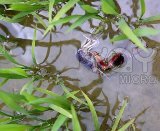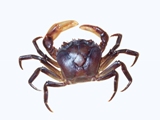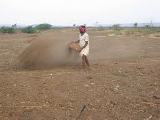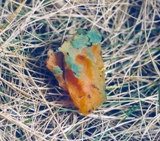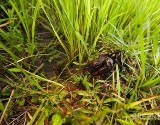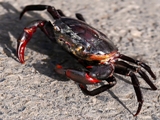 |
Eggs: The eggs are bright orange when first deposited, but become yellow, brown, and then dark brown before hatching.
Larvae: First stage larvae, called zoeae, measure approximately 0.25 mm wide at hatching; development to this stage requires 31-49 days.
Juveniles: The juvenile "first crab" is typically 2.5 mm wide (from tip to tip of the lateral spines of the carapace). Juveniles gradual1y migrate in to shallower, less-saline waters in upper estuaries and rivers, where they grow and mature
Adult: Sexual maturity is reached after 18-20 post larval molts, a t the age of 1-1.5 years. Males continue to molt and grow after they reach sexual maturity, but females cease to molt and grow when they mature and mate. |
